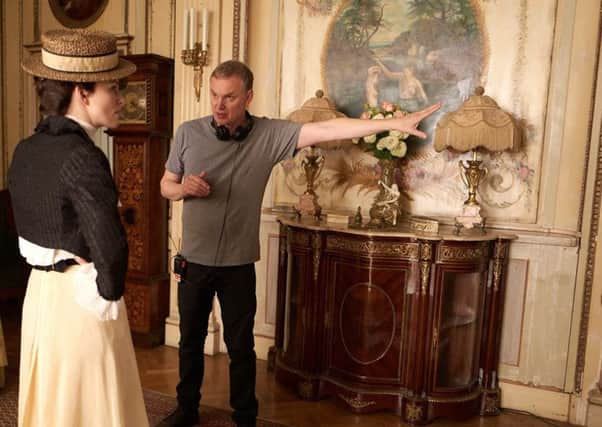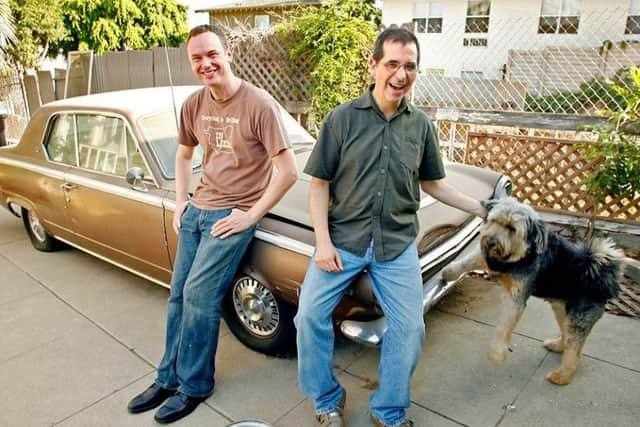Colette director Wash Westmoreland: Making this film was my late husband's last wish for our careers


Wash Westmoreland has worked with some of the biggest names in Hollywood and yet he made his first film in Leeds’s Roundhay Park just yards from the spot where Louis Le Prince shot the world’s first moving pictures. It’s a historical connection the 52-year-old was only recently made aware of.
“I have to give credit to my Dad,” says the former Wetherby High School pupil, who grew up in Moortown. “He had a cine camera which was used in my family for home movies, birthdays and Christmases. When I was about 10 or 11 he explained to me how movies were made and how scenes were broken down into shots. I started making these little four-minute movies that starred the kids on my street as actors.
Advertisement
Hide AdAdvertisement
Hide Ad“They had simple plots and even some special effects. They were also completely derivative and usually based on the last thing I saw at the cinema. The first one was called Close Encounters of the Worst Kind. Unlike the Steven Spielberg’s feel good ending though, the aliens actually blew up the earth at the end of the movie.


“The first film I made with my Dad was shot in Roundhay Park and was called The Chase. I played a thief who stole a precious jewel – a giant marble – from the outside window sill of the park mansion and was pursued around the park by my brother and my best mate, Andy Brooks, who played the detective.
“A few years ago I was talking to a cinematographer who told me that the first ever pieces of moving film – of people moving around outside the Mansion at Roundhay Park – in history were shot in Leeds by a Frenchman called Louis Le Prince. It’s exactly the same spot as the first shot of The Chase.”
From humble beginnings, Wash has reached the heady heights of Hollywood, working with big names such as Julianne Moore, Keira Knightley, Alicia Vikander, Susan Sarandon, Kristen Stewart, Kevin Kline, Alec Baldwin and Dominic West.
Advertisement
Hide AdAdvertisement
Hide AdHe is perhaps best known for the 2014 film Still Alice, for which lead Julianne Moore won a Bafta, Golden Globe and an Academy Award for Best Actress, although his latest movie Colette looks set to eclipse even that.
You might say Colette, which opened in cinemas on Friday and which had its Leeds premiere on Saturday, is a story of our time.
It tells the tale of Sidonie-Gabrielle Colette, who lived between 1873 and 1954 and was a prolific author, playwright and socialite who courted celebrity and scandal in equal measure.
The biopic is wreathed in the themes of the struggle for female empowerment, sexual expression and emancipation, none of which feels out of kilter with the current #TimesUp and #MeToo movements currently sweeping Hollywood and the world at large.
Advertisement
Hide AdAdvertisement
Hide AdThe fact much of this takes place a century ago is surprising enough but the story behind how the script came to the big screen is equally moving.
Directed by Westmoreland, the film was first drafted by him and his late husband, Richard Glatzer, in 2001.
“The idea for Colette came from my late husband and co-director Richard Glatzer. He was an avid reader and a huge fan of strong female characters. He started reading both biographies and novels by Colette around 1999. He said to me, ‘There’s a film here.’ And he was right.
“Colette was an extraordinary personality and there was something about the way she lived that just makes your jaw drop open even a hundred years later. We focused the story on her first marriage to a larger than life character known by the single name ‘Willy.’ He was a famous man of letters in Paris but, when hit with writer’s block, got his wife to write novels for which he would take credit. He even locked her up at one point.
Advertisement
Hide AdAdvertisement
Hide Ad“So you have a story of someone who’s incredibly talented being kept down by a giant egotist who’s ruthlessly exploiting her. And you’re wondering how she’s going to break free. We just both thought this will be an incredible film.”
But the story of how it came to the big screen is as emotionally charged as its content, as Wash explains.
“Richard really taught me about film. He taught me about screenwriting, about movie history, about how to work with actors – everything!
“We worked together for almost 20 years and mostly it was a fantastic time. We would dream projects up together, write them together and direct them together. Of course, for many years it was hard to find finance for our projects. We’d do side jobs in reality TV just to be able to keep our dream alive.
Advertisement
Hide AdAdvertisement
Hide Ad“The sad thing is that when our careers finally started taking off, Richard became very sick with motor neurone disease. He was still able to walk when we shot Still Alice, but had lost the ability to speak and would communicate by typing with one finger on an iPad.
“After Julianne won the Oscar for Still Alice, I asked him what he wanted to do next.
“He was in the hospital at that time, typing with one toe – ‘C-O-L-E-T-T-E’. He died a few weeks later, so after I came out of the darkest time, I focused on making the film as a way of staying close to him. In a way, I was still co-directing when I made the film as I always had him in my mind.”
The film has already won positive reviews from critics, with The Observer’s Mark Kermode saying: “The focus is on the creation of identity itself, and what it means to be the author of one’s own destiny. Colette cleverly unpacks the idea of life as performance, raising pertinent questions about the control of a public image, and its impact on private lives.”
Advertisement
Hide AdAdvertisement
Hide AdOther films which the duo collaborated on include The Fluffer (2001), Quinceañera (2006), Pedro (2008) and The Last of Robin Hood (2013), before Richard’s death in 2015.
“I don’t deal that much with the ‘industry.’ I’m an indie filmmaker. I just sit in my house and write scripts and then I have my producers send them out. Then I meet the actors in a cafe or a hotel somewhere and just talk to them about the story and the role and the whole world of the film.
“I like human dramas. What two people can say to each other in an ordinary kitchen can be far more dramatic than the Death Star destroying a planet, if it’s told right.
“Thankfully there is still an audience for this kind of cinema.
Advertisement
Hide AdAdvertisement
Hide Ad“People still want to go and sit in the dark and absorb themselves in other lives and other time periods for a couple of hours.”
He now lives in Los Angeles but has fond memories of Leeds.
He says: “There’s no better place to grow up. And I always like going back. I’ve been living in LA for 24 years now but still count a Yorkshire accent among my most valuable possessions. I’d love to come back and make a film in Leeds one day.”
Leeds ‘turning into California’
Wash Westmoreland now lives in LA but has fond memories of growing up in Yorkshire – although he says Leeds has changed a great deal over the years.
“Last time I was in Leeds some of my friends were talking about yoga classes and where to get organic veg – this is a lot more like California than the Leeds I grew up in,” he explains.
Advertisement
Hide AdAdvertisement
Hide AdWestmoreland grew up in Moortown, attending the recently defunct Fir Tree School, and his father Denis was a great cinema enthusiast as well as being a maintenance engineer for the electric board.
His mother, Margaret McManaman, worked at hair salon Marlene’s Coiffeur before she formed a building company with his stepfather, Michael.